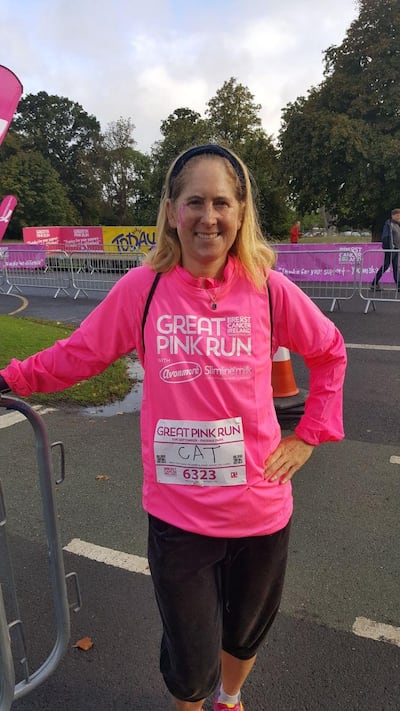We all know exercise is good for us – whether we are serious athletes preparing for a marathon or somewhat less energetic.
However, a recent study from the UK has shown that people who exercise along busy city streets may be open to levels of pollution which could reverse the benefits of keeping fit.
Researchers from Imperial College London found that high levels of pollutants prevent the heart and lungs from reaping the rewards of exercise – so while all the study participants (who were over 60) showed improved lung capacity after a walk in the park, a similar jaunt along a busy street showed no improvement at all.
And while the arteries became 24 per cent less stiff after walking in a green space, the result after a walk along the pavement was just 4.6 per cent.
Lead researcher, Fan Chung, Prof of Respiratory Medicine, said people should try to exercise as much as possible away from polluted areas.
“For people living in the inner city it may be difficult to find areas where they can go and walk, away from pollution. But it shows that we can’t really tolerate the levels of air pollution that we currently find on our busy streets.”
And the situation can be worsened for people with asthma, as previous research showed that diesel exhaust fumes can be a trigger for this and other respiratory diseases.
"Science would suggest that exercising in busy built up areas with high volumes of traffic has a negative effect on asthmatics," says Kevin Kelly Interim CEO of the Asthma Society of Ireland. "Because the pollution in the air passes through the airways down into the lungs aggravating symptoms and maybe lead to a full blown asthma attack."

Caitríona Kennedy is an avid hiker, but, although she suffers from asthma, has recently taken up running and on medical advice, tries to steer clear of Dublin city streets. “I have been hiking the mountains for 10 years and really love it,” says the 40-year-old. “However I’m fairly new to running and my GP wasn’t very enthusiastic when I said I wanted to start. I was on a lot of steroids and medicines at the time and she told me to have a nebuliser and a back-up crew ready for any help I might need – this warning made me even more determined and my first 5km was the Pink Run in aid of Breast cancer in 2016.
Increased stamina
“But I mostly run in Marlay Park as when I run along roads I need to take my inhaler as the car fumes make it more difficult to breathe. So I am lucky I have plenty of parks to choose from as running has hugely benefited me as my lungs are now stronger and I have increased stamina and resistance to pollutants.”
Alan Brady also runs in Rathfarnham's Marlay Park once a week and plays tennis at his local club, but also cycles to work two days each week and also runs along the city streets one evening a week. He believes that although he spends some of his time exercising in polluted areas, the combination of medication and some green-space exercise makes up for the time spent in traffic fumes.
"I have been an asthmatic since my teens," says the 52-year-old. "I have been seeing specialist Paul Carson for the past 20 years and together we control my condition with minimal intervention. So I will take two puffs of Ventolin before exercising and this prevents any problems – in fact, I have rarely suffered with asthma either during or after exercise unless I had a chest infection to begin with.

“But apart from the cycle and the weekly city run, most of my regular exercise is in the less-polluted environment of the outer suburbs where I think the air is fresher. And I would say that I always feel a lot better after exercise, so I hope that it is still good for my asthma and general wellbeing.”
But Paul Carson, allergy specialist at Slievemore Clinic in Dublin says unfortunately the research is accurate and diesel fumes can be problematic for people who exercise alongside traffic.
“Joggers are almost certainly and unwittingly damaging their lungs by breathing in diesel particulate matter along city streets,” he says. “And the bottom line is that this matter from diesel fumes leeches to allergens (such as pollen, dust mite, animal hair etc) and produces a more aggressive allergen. And this in turn produces more aggressive allergy ‘attacks’ for asthmatics running or jogging in heavily polluted streets.”
Kevin Kelly of the Asthma Society says more needs to be done in Ireland to protect people with respiratory problems.
“In an Irish context it is difficult to determine how problematic air pollution actually is in our large cities as there is little to no real-time monitoring taking place,” he says.
“In the UK people with asthma have the ability to download an app and see what the air quality is like in their area. This is made possible as there is a network of monitoring sites across the country reporting information in real-time which empowers asthmatics to make a choice whether or not they should exercise and where they should go.
“The Asthma Society would like to see a similar system rolled out in Ireland and welcomes the EPA’s intention to expand the monitoring network across the country. However, we feel this expansion needs to be rolled out as soon as possible as everyone – not just those with asthma – has a right to clean air. Our advice to asthmatics is always to carry their medication in case of emergency and to exercise in a location where they are comfortable and that their symptoms will not be triggered.”








